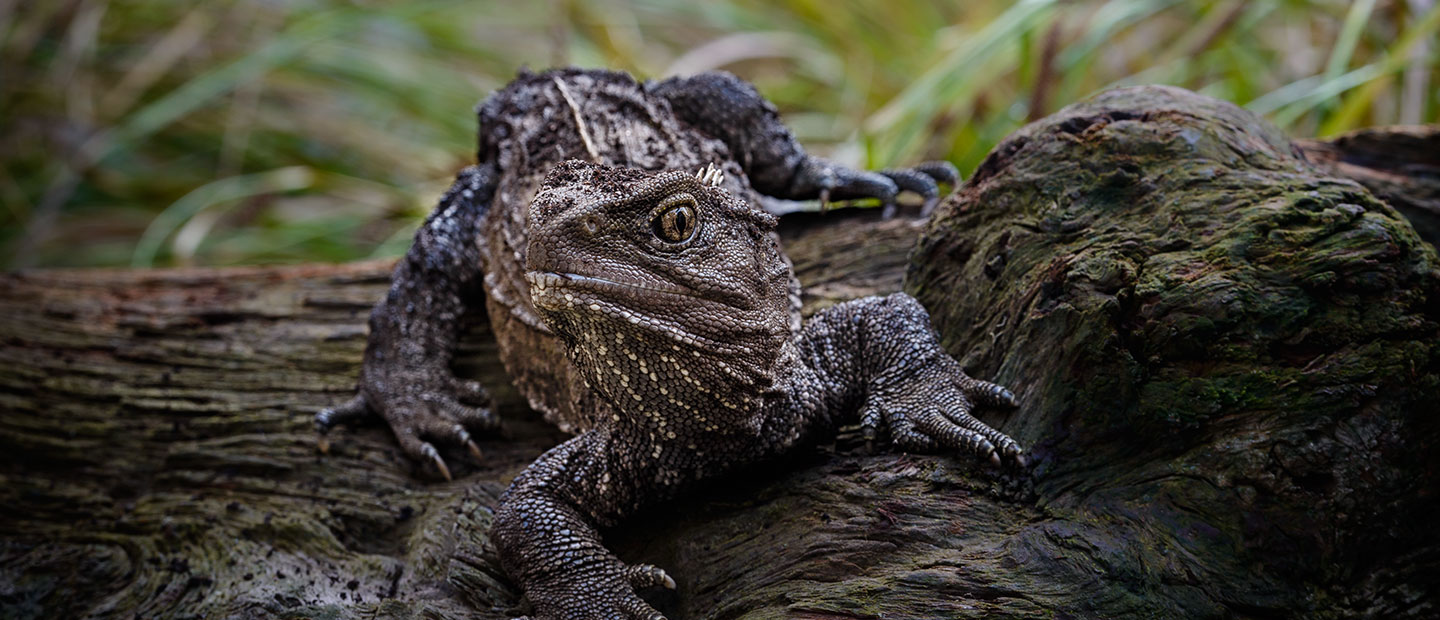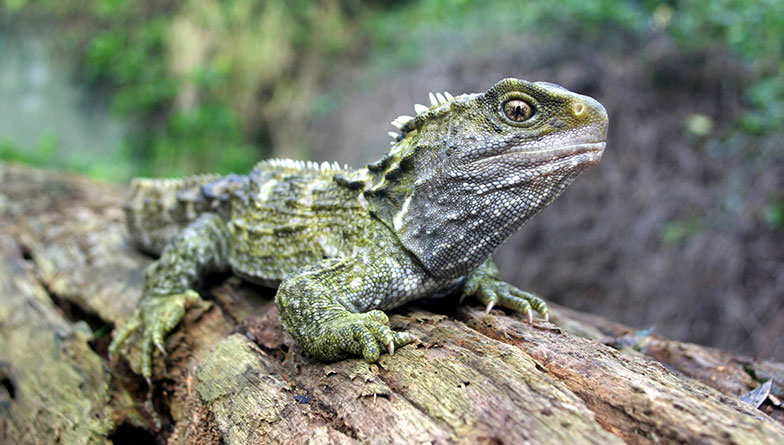3 eyes?
Tuatara, like lizards, have a ‘third eye’ on the top of the head. The ‘eye’ has a retina, lens, and nerve endings, but it is not used for seeing. It is visible under young tuatara skin but becomes covered with scales and pigment in a few months, making it hard for humans to see it. This parietal eye is sensitive to light and may help the tuatara judge the time of day or season.
Are they a lizard?
No! Although they look similar to some lizards, they’re in a reptilian order all of their own. The main visible difference between tuatara and most lizards is the absence of external ear openings (chameleons also lack these but you’d be hard pushed to mistake a tuatara for a chameleon!). The colour of tuatara ranges from olive green to brown to orange-red, and they can even change colour throughout their lifetime. They shed their skin about once per year as an adult, but more frequently when young.
Is it a boy or a girl?
Like many other reptiles, the temperature of the nest determines the sex of young tuatara while they develop in the egg. Higher temps = more males. Lower temps = more females. Eggs take up to 16 months to hatch – when it gets too cold, egg development stops until it gets warmer again. Good things take time!



